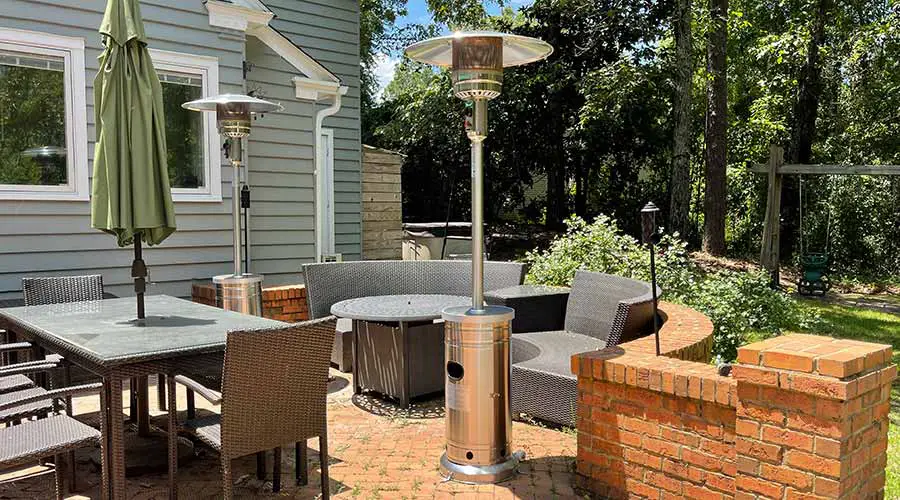
So you have finally invested in an outdoor propane heater and can use your garden patio or outdoor lounge area in somewhat colder temperatures.
Due to efficiency, performance, and price, you chose a propane heater, but the task of adequately fitting the propane tank and safely lighting the heater might seem like a daunting one.
You are watching: How To Light An Outdoor Propane Heater
- How do you even know whether the propane gas is full or not?
- How long is it until it runs out of propane?
- How do you fit the tank to the heater in a safe manner?
If you have these questions, or similar ones, about lighting up your propane heater, this article is for you!
Preparing For The Task
Before we go into the exact steps of lighting your outdoor propane heater, we have to go through a couple of safety tips and preparation tips everyone should know.
If you haven’t ever turned on a propane heater or connected it to a heater, oven, or perhaps a grill, you need to start from the basics if you want to do a good job.
Choosing The Location Of The Heater
One of the first things you have to look at is the location of the heater. Though most new heaters come with sensors that shut the machine off when it tips over or overheats, putting your propane heater 20 cm away from a highly flammable outdoor curtain still wouldn’t be a good idea.
Try finding a place for your propane heater, which will be the least dangerous, even if the sensors mentioned earlier and safety systems don’t work.
You might even have to reorganize your patio or the space you want to use to have a safe place to place your heater without compromising efficiency.
Checking The Propane Level
It is somewhat more of a convenience tip than a safety tip since if you don’t have propane in your tank, you will need to buy more, but it won’t cause any harm.
However, there could be a valve problem, or some other tank components might be damaged in rare cases, thus letting the propane leak out somewhere.
If you know your propane tank was full the last time you checked it, and now it isn’t, it is safer not to use it since it is very dangerous to handle propane tanks with leakage.
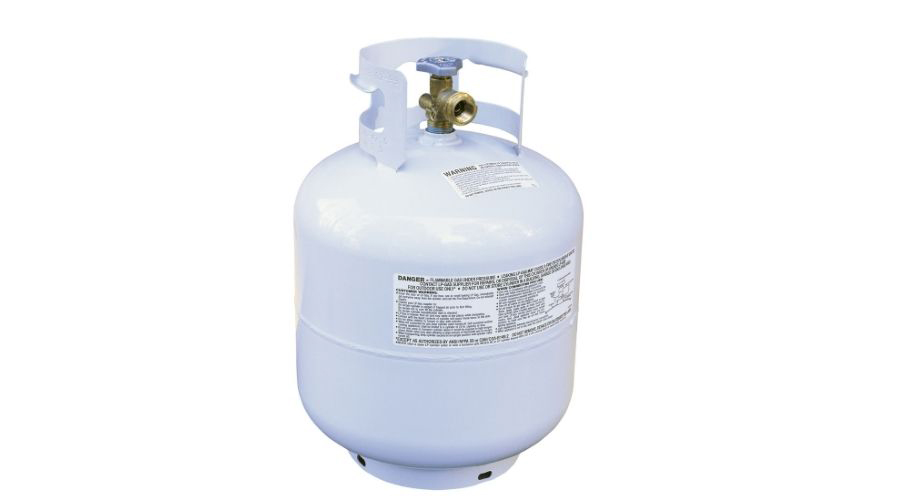
1. Weighing Your Propane Tank
There are many ways to check the propane level in a propane tank, even without using a propane tank gauge. One of them is to weigh your propane tank. You can easily do this with a tank gauge scale.
The propane tank’s TW (tare weight) is usually around 17 pounds, and the average full tank will have 20 pounds of propane.
By subtracting the TW from the tank’s weight, you get the amount of propane you have, which will give you an estimate of how long it will probably burn.

2. Do The Water Test
Another way is to spill a cup of boiling water over the side of the tank. By touching the tank’s side, you will feel a part where it gets cold, which signifies the top of the propane level.
Make It Child-Safe
If you have children around, one of the most critical steps, you need to make the heating system kid-safe. Lock the door to the propane tank, and try to find a heater with a control panel or buttons up high.
Not only would it be annoying for a child to tamper with the heater, but it can also be hazardous if the safety steps haven’t been taken beforehand to ensure the safety of the people present.
Also, have a fire extinguisher nearby if you plan to use a heater, especially with children. You never know what might happen.
Step-by-step Guide To Lighting Up Your Propane Heater
1. Determining The Time Of Usage
So after you have carried out a few safety steps to ensure that your night on the patio will be fun without firefighters and sirens, it is time to turn the heaters on.
The first step is to determine when you should turn it on. Suppose you are having guests coming over for an outdoor dinner.
Suppose you wait to turn on an electric or outdoor propane heater when your guests arrive, or worse when everyone has already taken their seats outdoors. In that case, we can guarantee that at least the beginning of the dinner won’t be enjoyable.
Make sure you turn on your heater 15 minutes before the guests arrive or before you go out to relax. Especially if you are using a propane heater, the flame from the burning propane needs a couple of minutes to heat the whole device to working temperatures, when you would shiver in the cold.
Read more : Outdoor Lighting 101: Wall Washing Vs. Wall Grazing
Also, don’t forget to turn on any heater if you are organizing something in frigid weather. If you have extra heaters on the ceiling or a fireplace, turn them on or fire for about 10-20 minutes before your guests or family members arrive if you want the best experience.
When determining the usage time, consider how long you will turn on the propane heaters since you might need to buy another propane tank if you plan on having an all-night cocktail party and your tank is only one-fourth of the way filled. Make sure you have enough propane to fuel the whole night!
2. Checking & Fitting The Hose
Now, for the propane tank’s actual lighting, you first need to check whether you have the propane hose.
Usually, devices like outdoor heaters come with a propane hose already attached to the propane tank holder. Still, we recommend you check it before using the propane heater since you must purchase one if there is no hose.
If you have the hose in place, take out your propane tank and start to assemble it. Since the hose is probably connected to the heater already, you need to remove the safety cap from your propane tank (if you have one) and then fasten it on the hose, using a wrench to tighten the nut.
You can purchase gas leak detection liquids for a couple of bucks, or you can use soapy water or shaving cream to detect any leaking by placing some on the part where the nut and the end of the hose meet, checking for any bubble-like formation.
If your propane tank is securely and safely connected to the heater, you can start turning it on!
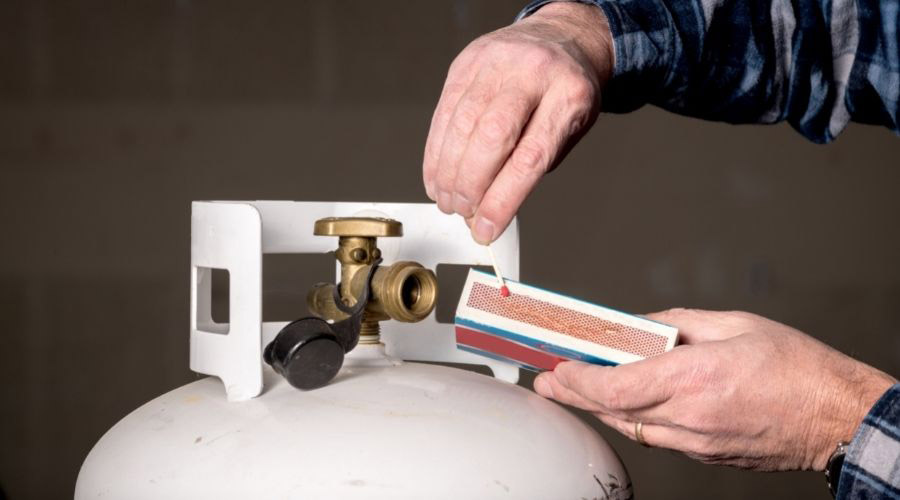
3. Opening The Propane Tank Valve
Okay, so you have your propane tank adequately connected to the device, it is time to turn on the heater. This step varies somewhat by each device, but we will run through a general idea of how propane heaters work.
First, open the propane gas tank by turning the valve counterclockwise (rarely, you might have to turn it the other way to open it, depending on the country, region, company, or the exact gas tank model).
Opening the valve fills the hose with propane gas, which you can regulate at the heater. If you have a filled propane tank, this means you will have nothing else left to do with the tank until it runs out.
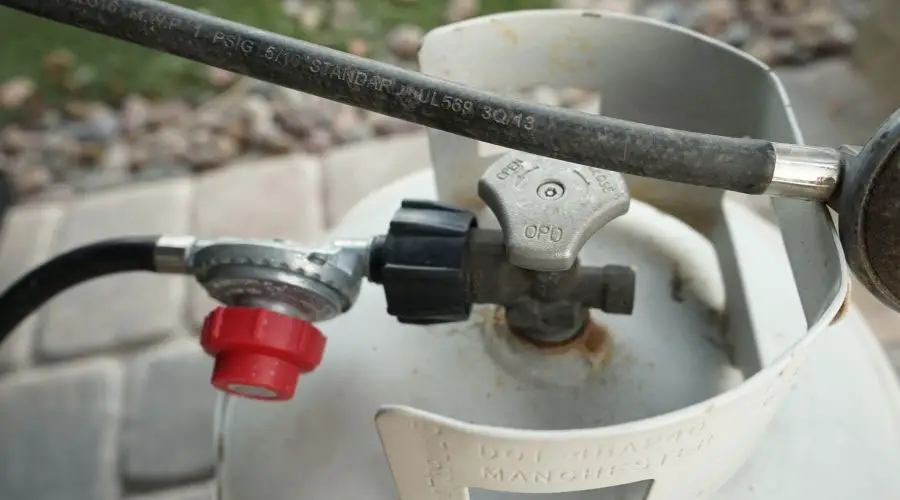
4. Releasing Propane Into The Chamber
Now that you have the propane tank in place, secured and safe, with the valve turned on (remember, you have to turn it entirely on, not halfway!), you can head over to the heater’s control panel or control knobs and start the fire.
Generally, most outdoor propane heaters have knobs that you can use to control the flow of the propane. Usually, they have to be pressed in and turned 90 degrees in one direction (usually counterclockwise) to allow gas flow.
This works by pushing a button, using a remote control, or even a touchpad on some devices. Still, on most propane heaters you are likely to confront in your lifetime, a large majority will have control knobs.
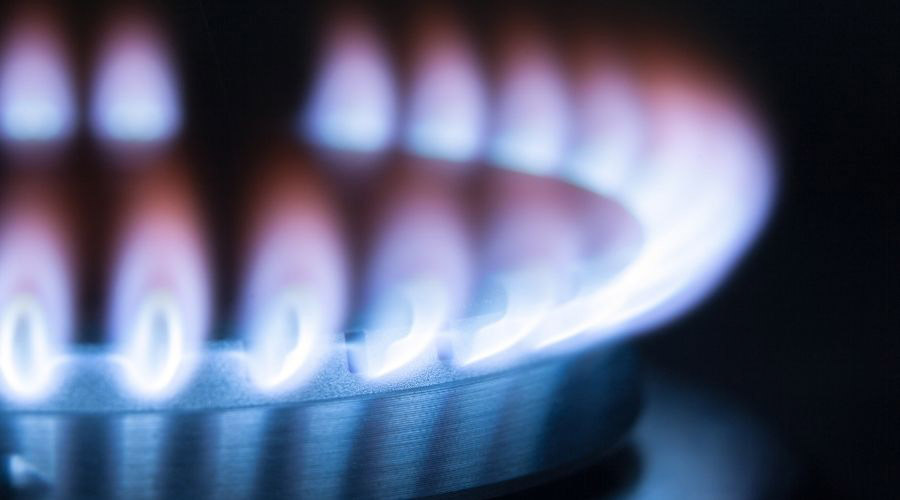
5. Igniting The Fire
Once you have turned the propane’s control knob, you must press the ignition knob/button. This one is usually red and distinct from the other knobs.
You should press it a few seconds after turning the propane knob so the gas can enter the chamber and ignite. Thus the burning starts.
Make sure to press the button and hold it down, possibly keep it there or push it multiple times (depending on the type of heater you have), but make sure that the propane catches fire at this point.
If it doesn’t, the safest thing is to turn everything back to the neutral position, wait a minute or two, and then try again.
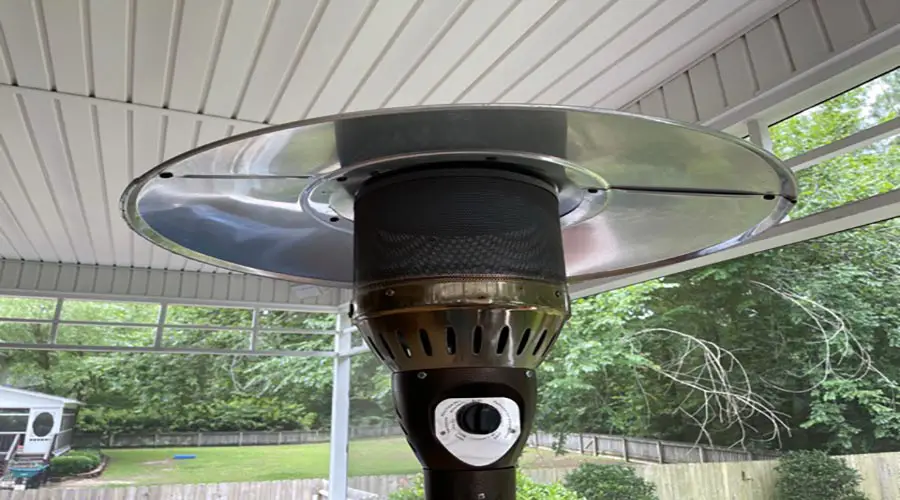
6. Keeping The Knob Pressed
After turning the propane knob and igniting it, it is best to keep holding the propane knob for about 30 seconds in the pressed-in, turned position for the flame to keep burning correctly.
If you take your hand off the knob too early, the amount of air in the system or the coldness of the device might cut out your fire, and you will have to start again.
For this very reason, we advise you to press, turn and hold the knob, ignite the fire, and once it has ignited, release the ignition button, but keep holding the propane button for about 30 seconds.
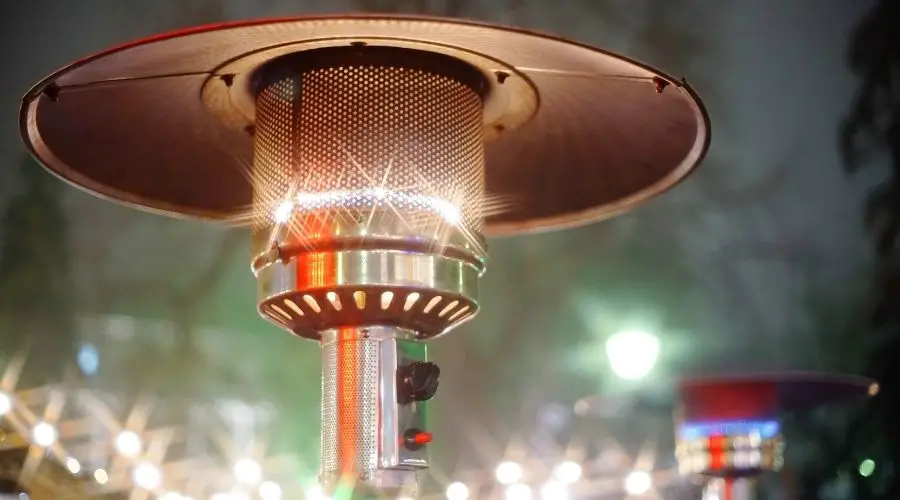
7. Enjoy Your Flame
Let go of the knobs and the buttons, and enjoy your flame. Please turn on your propane heater somewhat before you want to use the heat it provides, but when turning it on, you will immediately feel the warmth radiating through the air.
After the heater reaches working temperature, it will quickly heat your patio or other garden areas you want to use!
Best Outdoor Propane Heaters
Read more : What Makes an AC Compressor Stop Working?
An article on propane heaters wouldn’t be complete without recommending some actual products to the readers. There will be all different outdoor propane heaters in this list, and they will not be in any particular order since everybody’s standards are different.
Someone looking for a luxury, high-tech device to heat a 5000-square foot outdoor lounge will not look for a product in the same range as someone who wants a heater over a patio for four people.
For this reason, we tried collecting different propane heaters for all other occasions and requirements.
We tested every single product on this list so that we can confidently recommend them to you. Read on for our top 10 propane heaters!
Now for a classic, mushroom-styled (dome-top), free-standing propane patio heater. We bring you the Hampton Bay Stainless Steel Patio Heater, which can produce 48000 BTU.
All different propane heaters are suitable for various purposes, and this specific type of propane heater is probably the most widely-used one for patio heating.
It is stylish and elegant, even though there is probably a not-so-elegant-looking propane tank inside it. Most propane heaters of this type have burn times of 40 hours and have a low maintenance cost (0.3 dollars/hour of propane use), making them one of the best options for heating an outdoor space for a longer time.
It is rain and weather-resistant and can warm up about 200 square feet without a problem. The only negative is that it doesn’t have wheels, and not every element of the heater is made out of stainless steel as advertised.
Another patio-styled propane heater, the Golden Flame Square 46,000 BTU Matte Mocha, is a stylish and practical solution for heating any outdoor space.
Its straight-edged design and high performance will be enough to heat some space for a couple of people to enjoy the fresh air even in colder weather.
Golden Flame comes with heavy-duty wheels for more accessible transport, one of the features of a patio heater that you will need since carrying one without wheels is quite a heavy task.
It also comes partially assembled, which, according to their info, reduces the assembly time by 50%. Upon arrival, you would need to build most patios this size, which is not an arduous task.
The BELLEZE Premium Outdoor Patio Heater is another higher-end-looking, elegant, sleek outdoor patio heater that made it onto our list.
The reason for that is its bronze-ish color (hammered bronze, specifically), in contrast with the metallic paint, gives this product a look that would fit in any elegant patio environment. It can pump out 48000 BTU of heat in a 15-foot diameter circle.
It also has the crucial wheels for smoother mobility, so you won’t have to ask someone for help if you need to move it away somewhere.
The product is made for 20L propane tanks, which means that a lot of heating power can be stored and used for a low price since similar propane heaters can last up to 40 hours on 20L of propane.
After all the large, powerful heating devices, we believe there is also space on this list for the smaller devices, for the people who might not need to heat large rooms, but just a table. This tabletop patio heater is one of the best products for this purpose.
It uses a 1lb propane tank, which, though it might seem too little, is enough for around 3 hours on a high setting, which you most definitely won’t frequently need since the fire and heat pumped out this device is equal to 9500 BTU.
If you plan on inviting a couple of guests to have an outdoor meal, this small heater is perfect for heating people around a desk so they can enjoy their meal without worrying about the cold.
Another great option if you are looking for a tabletop heater is the Hampton Bay Tabletop Propane Gas Patio Heater, which can produce up to 11 thousand BTU, and the heater’s body is stainless steel.
Though arguably not as fashionable as the Hiland tabletop heater, it can produce more heat and a larger radius than the Hiland model, which is why we include it on our list.
If you have a similar dinner as we mentioned in the Hiland review but have a larger table or are inviting more guests, you might need the power of this tabletop heater to provide the same level of comfort.
Final Thought
Overall, it is relatively easy to light an outdoor propane heater. Now you can go with confidence that you will be able to do it yourself and have all the parties and company you wish while staying warm during the year’s colder months!
Source: https://gardencourte.com
Categories: Outdoor


